
Expanding STEM skills through robotics
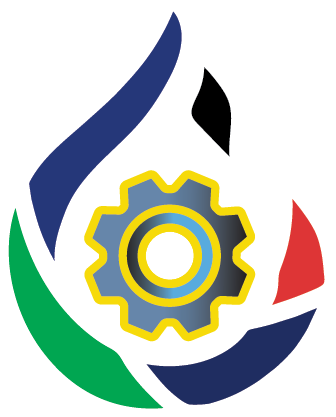
Who are we?
We are Texpand, a FIRST Tech Challenge (FTC) team from Cape Town, South Africa. We are passionate about robotics and FTC and have made it our goal to share that passion with as many young South Africans as we can. We do this though exposing high schoolers all over the country to robotics and what an amazing opportunity competing is. We then form, fund, train, and mentor these new teams and help them learn and grow as much as possible while having lots of fun as well!
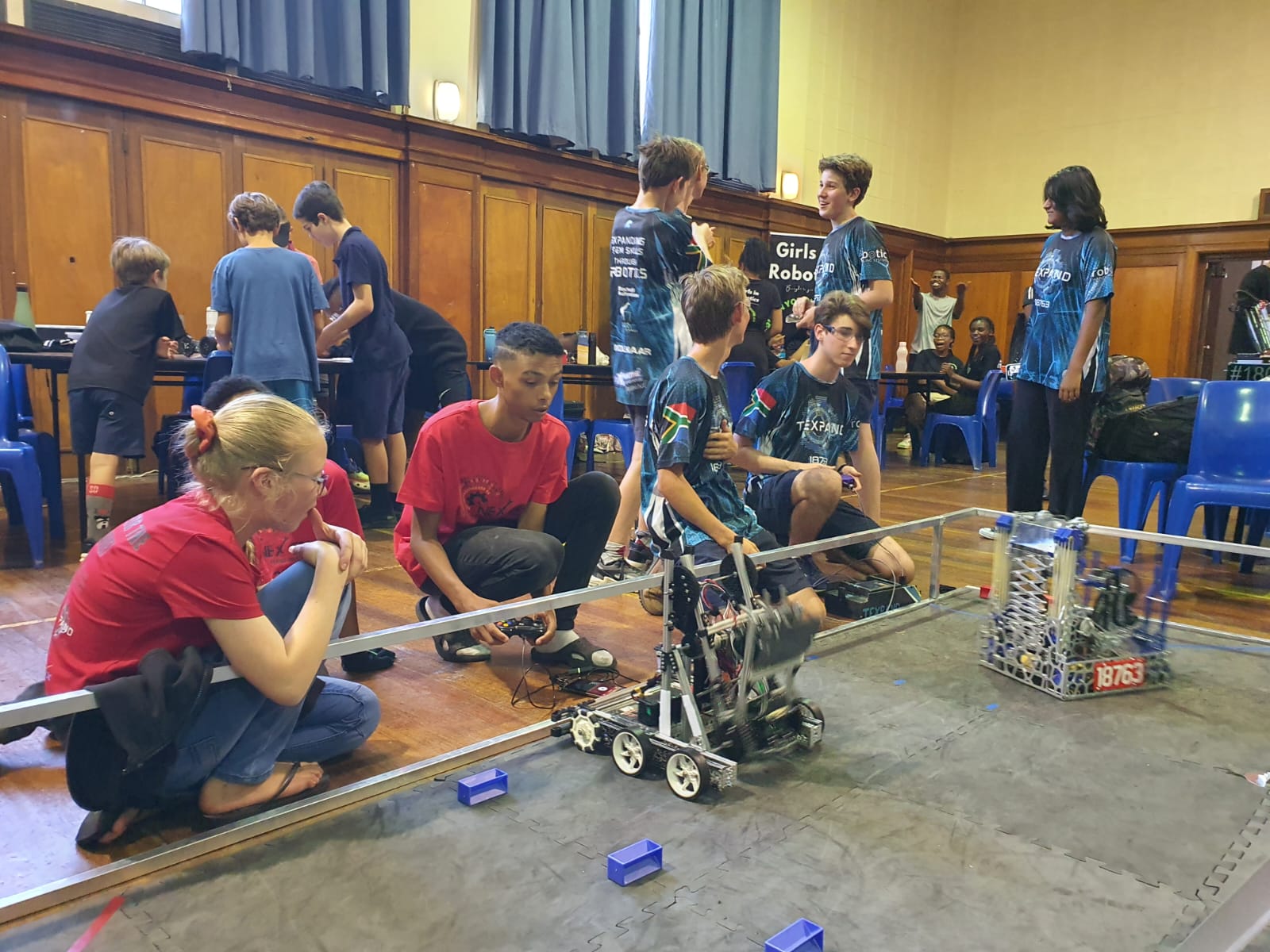
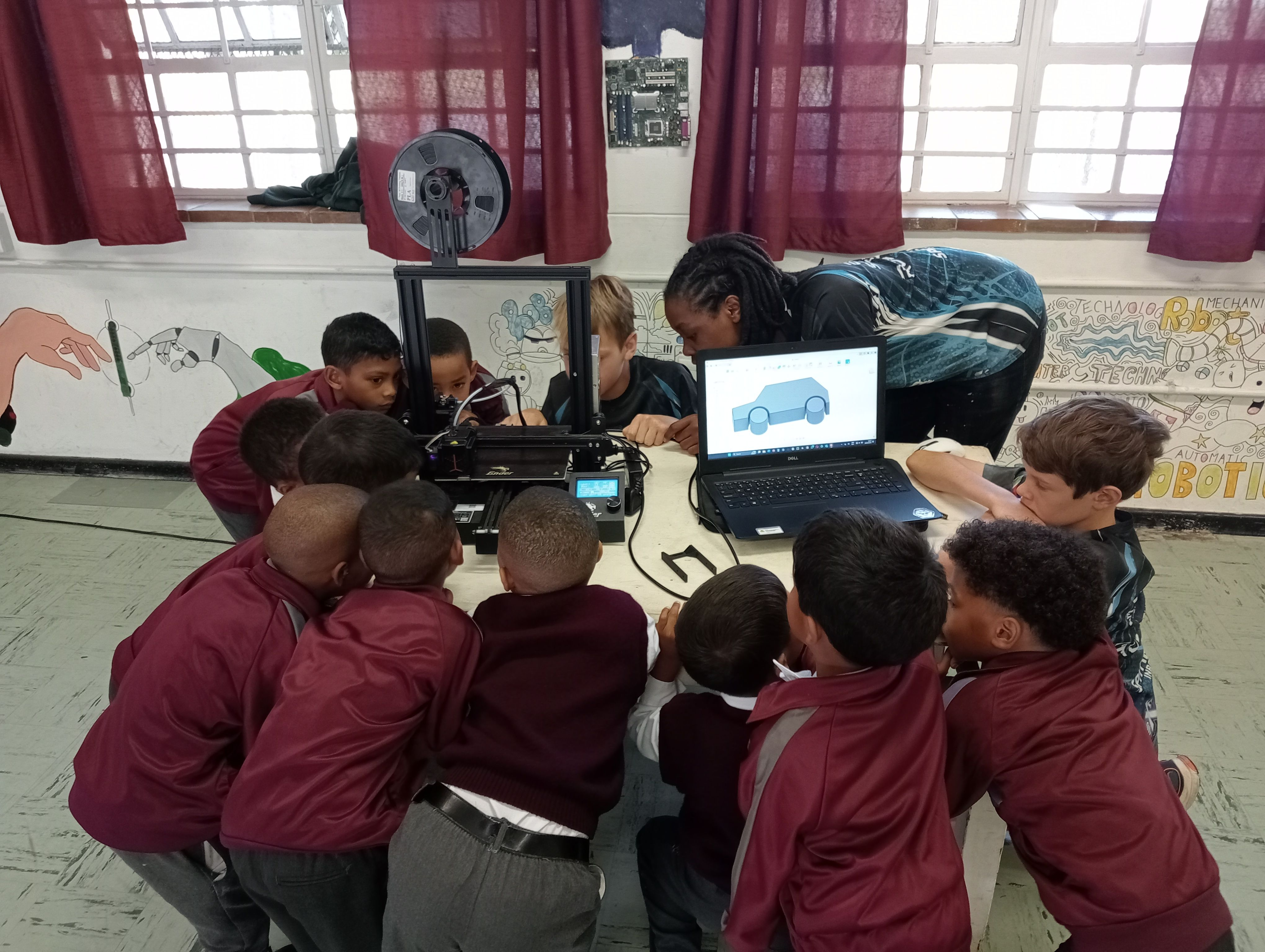
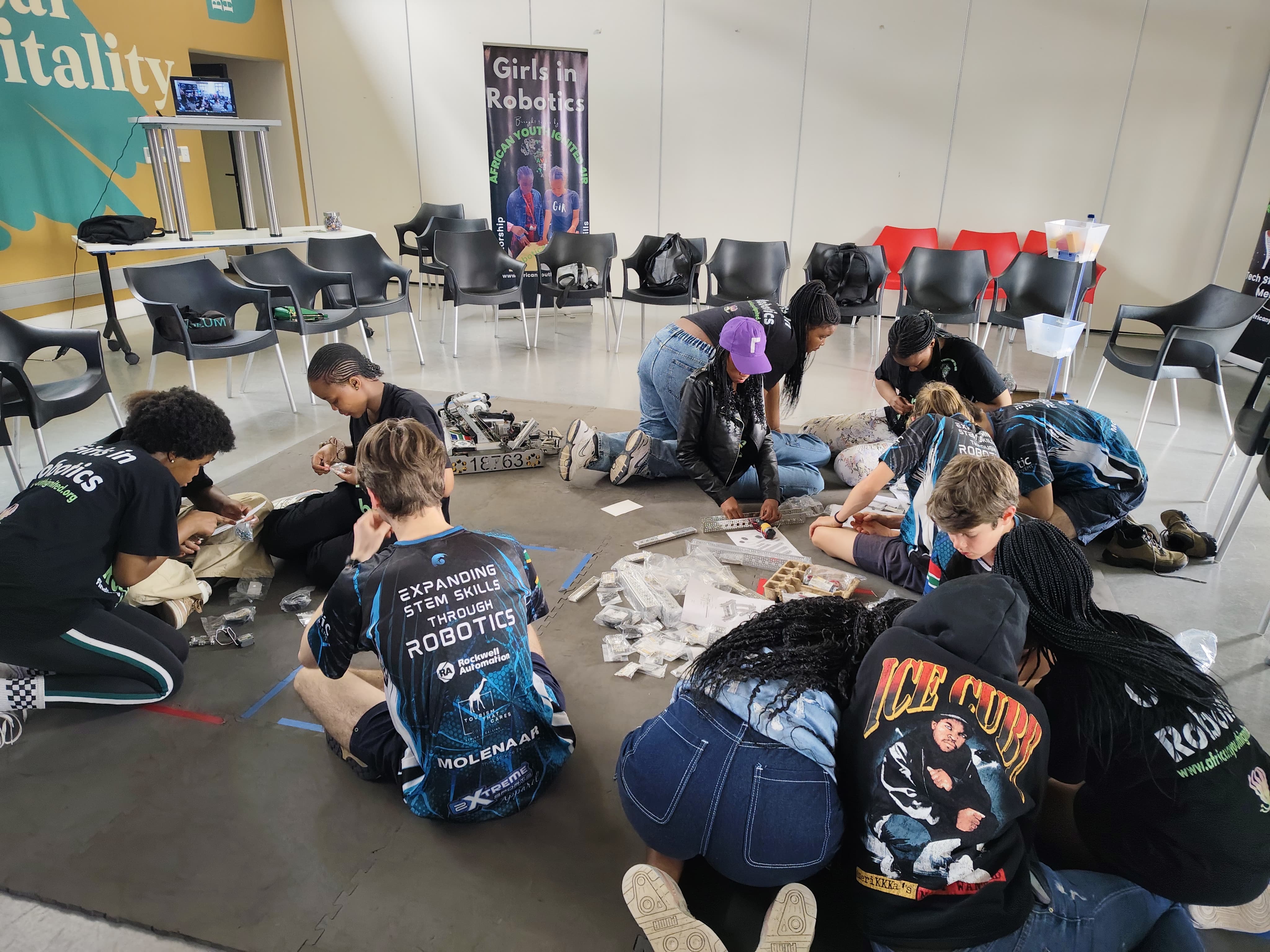
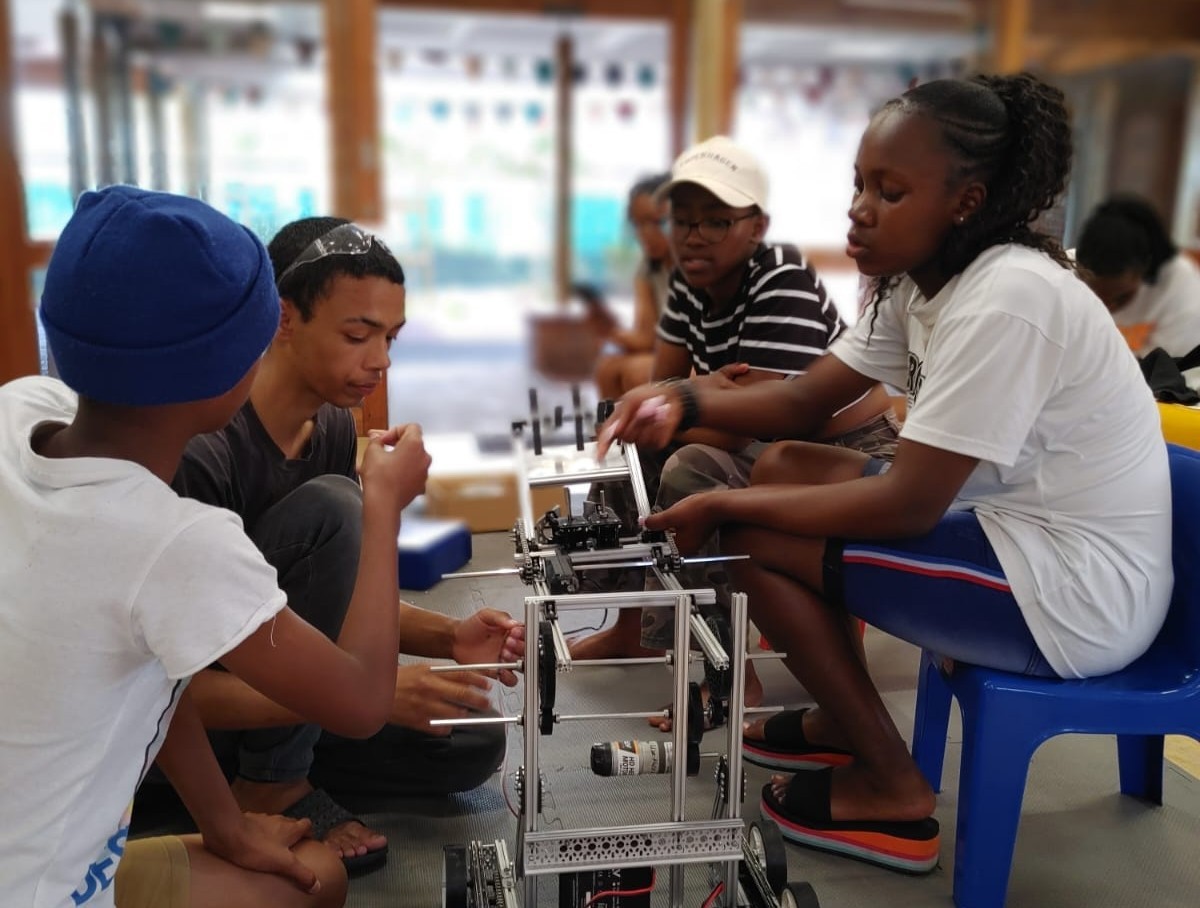
.jpg)
We brought back what we had learned from our experience at the World Championship, and once again massively improved our game in all aspects. We ran a rookie boot camp and recruited 7 new members, which we trained throughout the season. We made even more connections with the STEM and FIRST communities, and implemented highly advanced mechanical and software systems. Our outreach expanded greatly, and throughout the season we introduced roughly 500 students from disadvantaged communities to robotics and technology. We won the robot game and Inspire award at the regional and national competitions, and once again qualified for the World Championship.
.jpg)
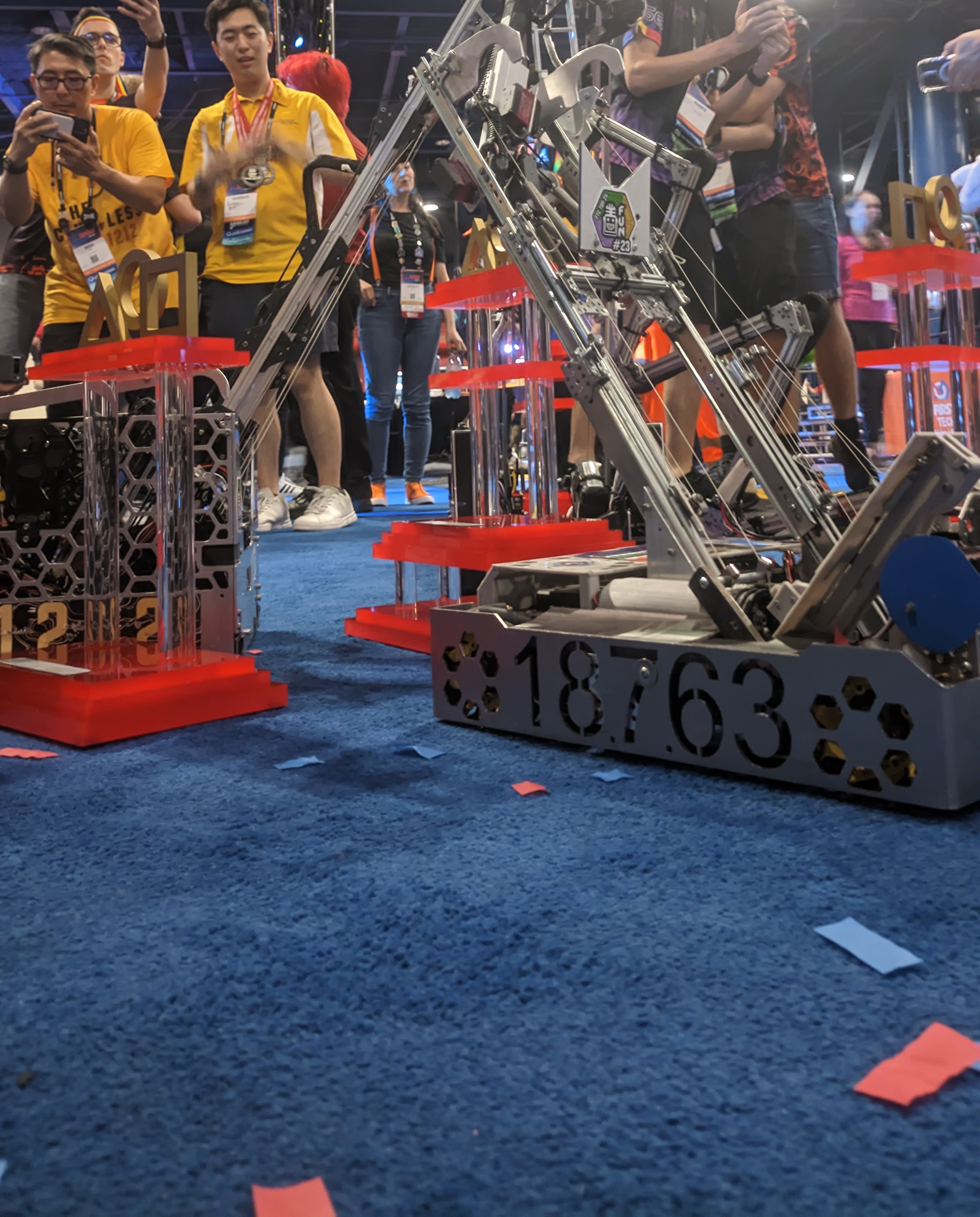
At the World Championship, we were much more prepared than in the previous season and managed to efficiently organise our time and go to site visits at engineering companies in Houston and build more meaningful connections with other FTC teams. The 4 day long competition was an exhilarating experience, and in the end we brought home the Control award for our division — which is awarded for coding and software excellence — and were apart of the winning alliance, making us the 2024 CENTERSTAGE World Champions alongside our alliance partners, AiCitizens from Romania and The Clueless from San Diego.
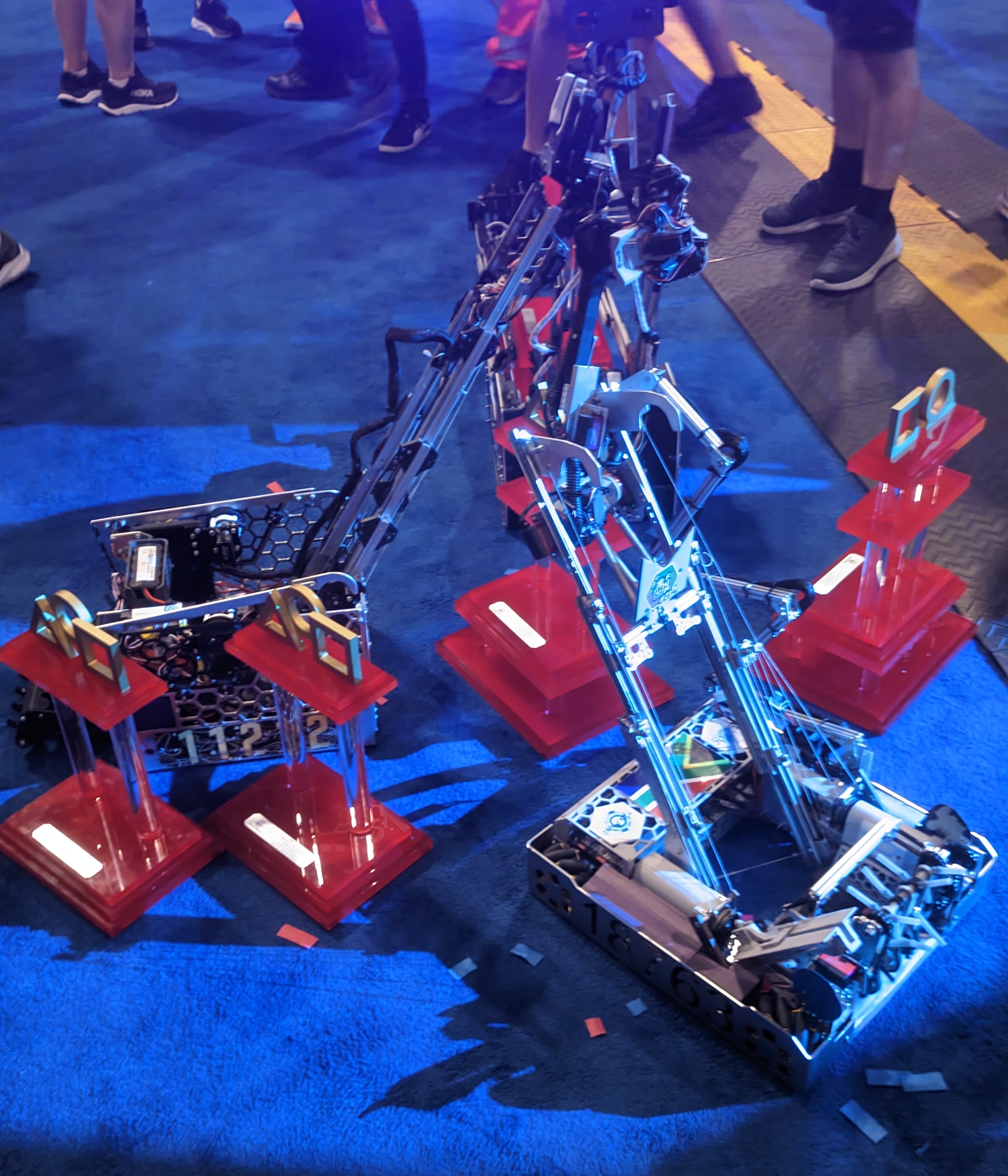
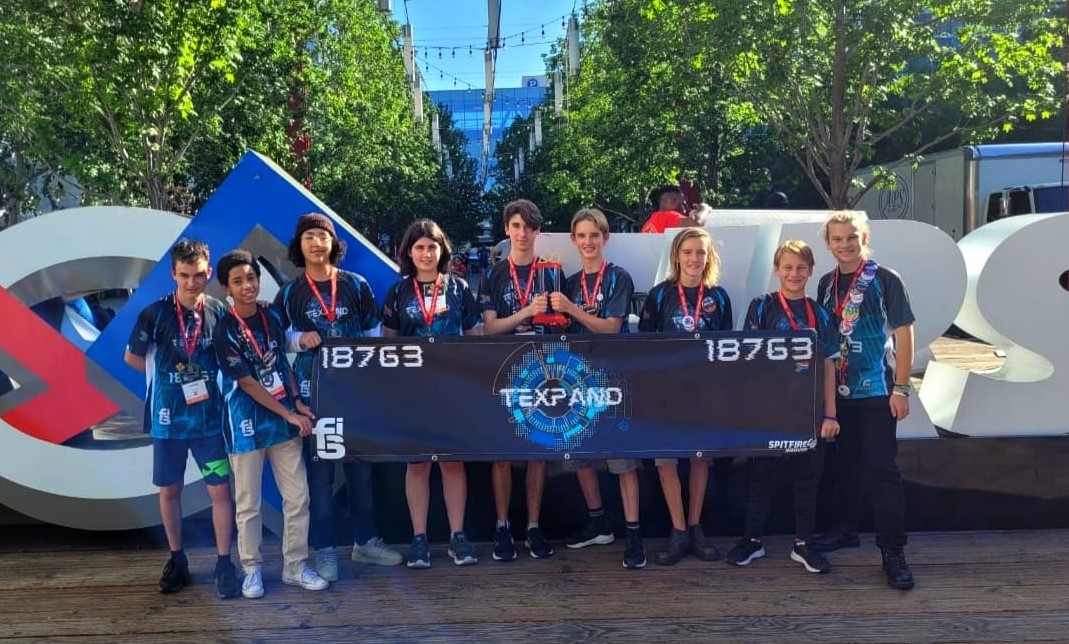
We learned exponentially in the off-season before Power Play, and during the season. We expanded our competition beyond robot building and programming alone. We trained ‘apprentices’ for the first time, who then joined the team, and we worked on new ventures such as reaching out to professionals in STEM for engineering input and sponsorship for better parts. We also started a website, social media campaign, and began our outreaches to disadvantaged students. We connected with the wider FIRST community, receiving mentorship from many excellent teams such as Wolfpack Machina from the USA, who went on to win the Inspire Award at the World Championship.
At the regional and national competitions, we won the robot game, as well as the Inspire Award — the top award, which recognises excellence in all fields of the FTC competition. As a result, we were invited to the World Championship in Houston, Texas, where we had an incredible time connecting with international teams, and learned even more. In our division, we placed 22nd out of 47 teams (there were 192 teams randomly divided into 4 divisions), and won the 1st place Think award.
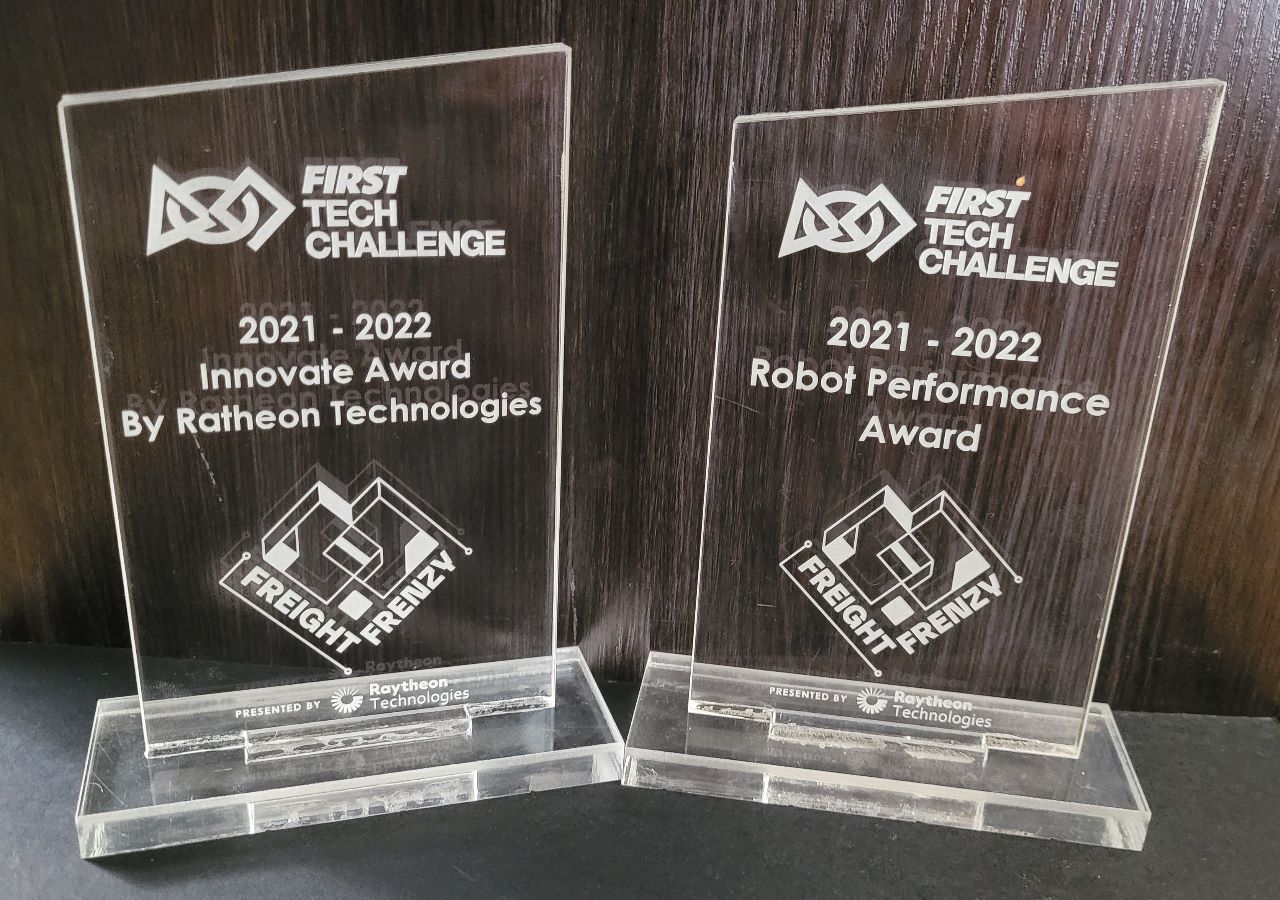
We improved our game even further in Freight Frenzy. We recruited new members, and were the only SA team during the season to use Java programming instead of blocks. Once again, we won the national competition with a solo score of 108 points and the Innovate Award.


Ultimate Goal was our rookie season. We started with only a sponsored REV Robotics starter kit, and were a team of 6 friends, all with little to no previous experience in robotics. Despite our inexperience and various struggles caused by lack of resources and the COVID-19 pandemic, we worked hard and set ourselves on a steep learning curve, ultimately allowing us to win the South African nationals with a solo score of 89 points as well as being awarded the Innovate Award.
As a team, we’ve realised that robotics coaching is inaccessible and unaffordable to most South Africans. Our team works to provide learning opportunities and teach disadvantaged students who would not otherwise have a chance to engage with technology. Through our efforts we hope to improve the future of South Africa’s youth and repair the massive lack of STEM skills and awareness in South Africa.
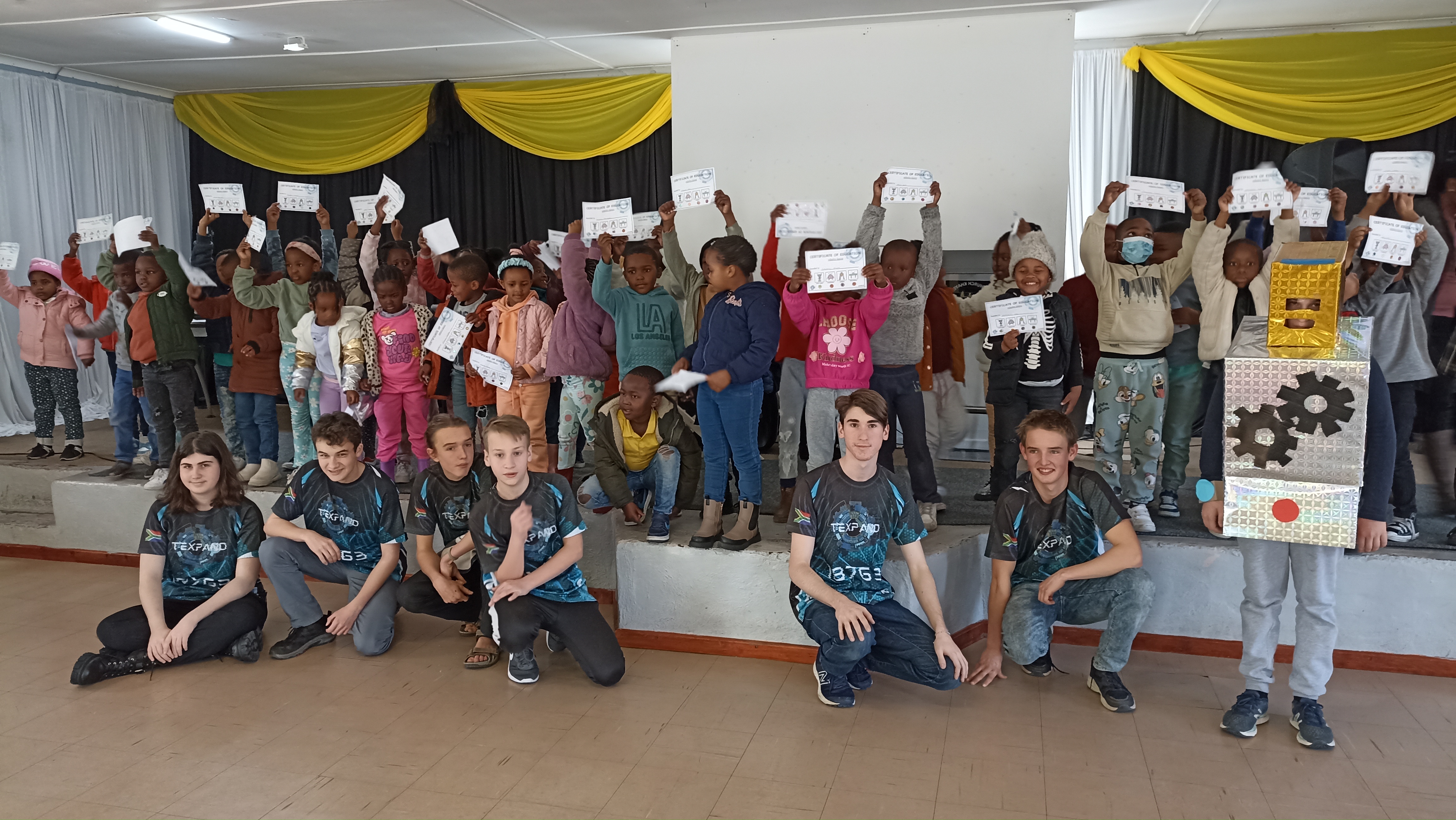
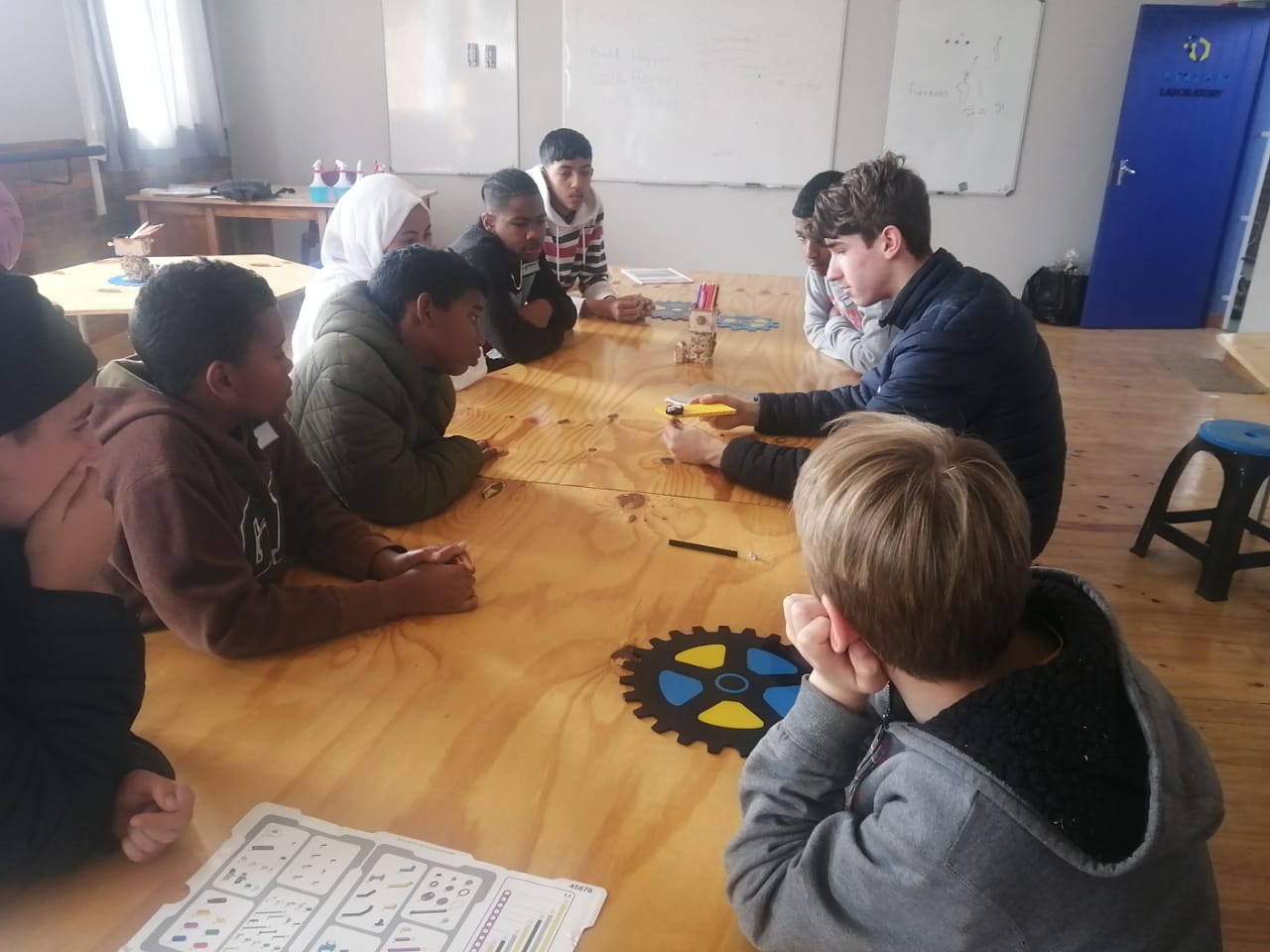
We train students in several different ways. We have offered personalised robotics coaching sessions to several South African FTC and FLL (FIRST Lego League) teams, as well as international teams. We developed a robotics activation course which teaches the basics of mechanics, coding, and 3D printing/CAD (computer aided design) with hands-on lessons that allow deep learning to take place. It’s been adapted for pre-K, primary, and high school, and has been used to introduce roughly 500 students to robotics.
Because we have learnt so much from the generosity of the FIRST community, our team aims to give back by helping other FIRST teams. We have assisted or mentored over 100 FTC teams, and are always willing to help teams on the FTC discord, which has over 20 000 members.
.png)
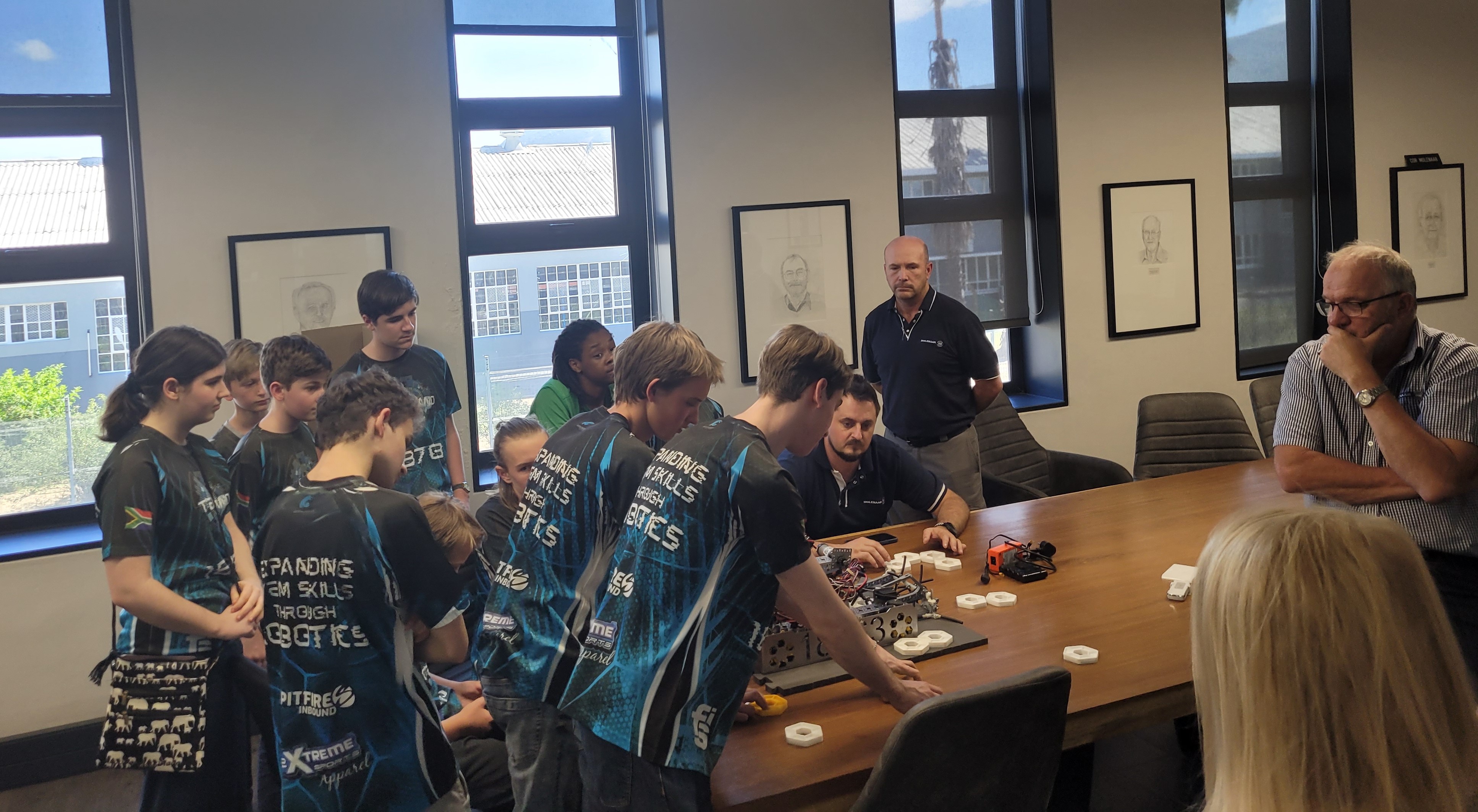
Our team seeks regular engineering input from STEM professionals during our build-season. We aim to foster relationships with businesses, and not only learn from them, but also collaborate with them on our various outreach projects.
Banking Details
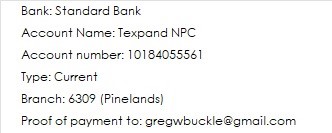
Other payment methods
Contact us at teamtexpand@gmail.com to learn how your company can qualify for a Section 18A tax certificate (for South African companies) or a 501(c) certificate (for international companies).
We reused much of our kit for Center Stage, but also added to it. Once again, we used a modified strafer chassis, but added GoBilda odometry for more accurate field localisation. We had an active intake with spinning tubes directly into our double gripper, which had forming bars at the back to correctly orient pixels. We used viper slides for vertical delivery, along with an impressive 7 axis arm that we programmed using inverse kinematics. Our programming of our arm and custom odometry localisation code won us the Control award at Worlds, and we also won the overall robot game — making us World Champions alongside our alliance partners.
Also see Behind the Bot here
Our drivetrain was a modified gobuilda strafer chassis, we got shorter U channel to make the drivetrain narrower for better maneuverability on the field
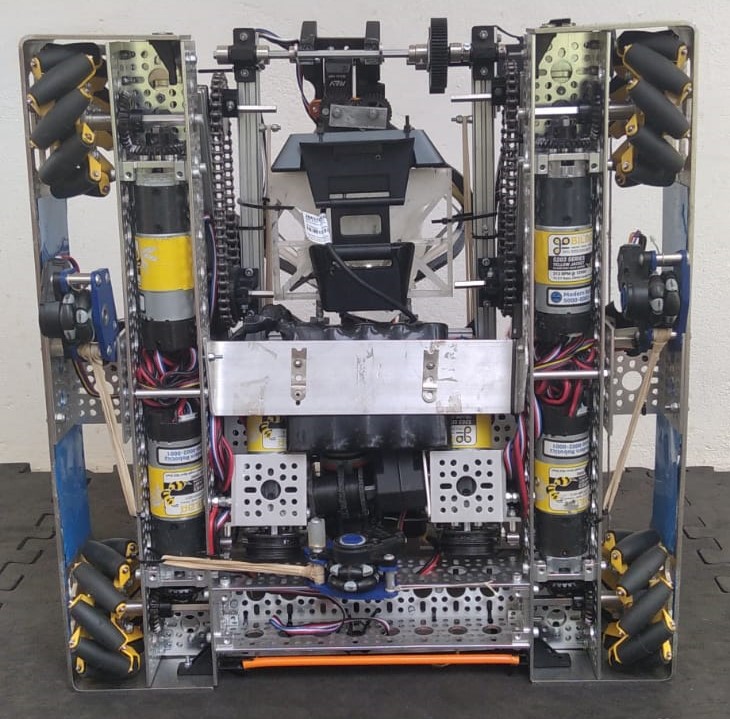
For our grippers or way of grabing the cone we used 3D printed arms with gear teeth on the end so that we could use only one servo for each gripper. We have two grippers on the robot on for collection and on for delivery

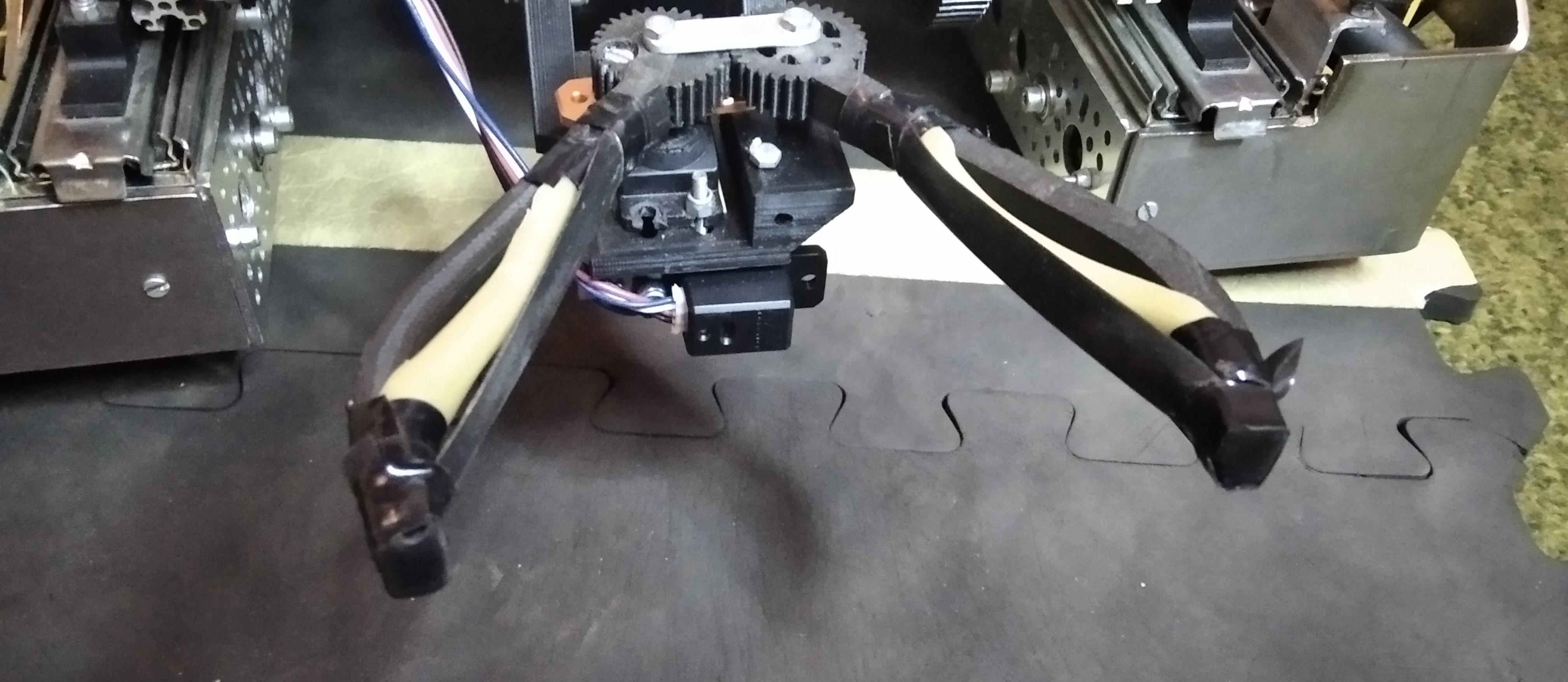
Our delivery slides were four stage viper slides, we got viper slides when our draw slides were being way to unreliable. The down side of four stage viper slides is they are very heavy, so in hind sight we should have only used two stage
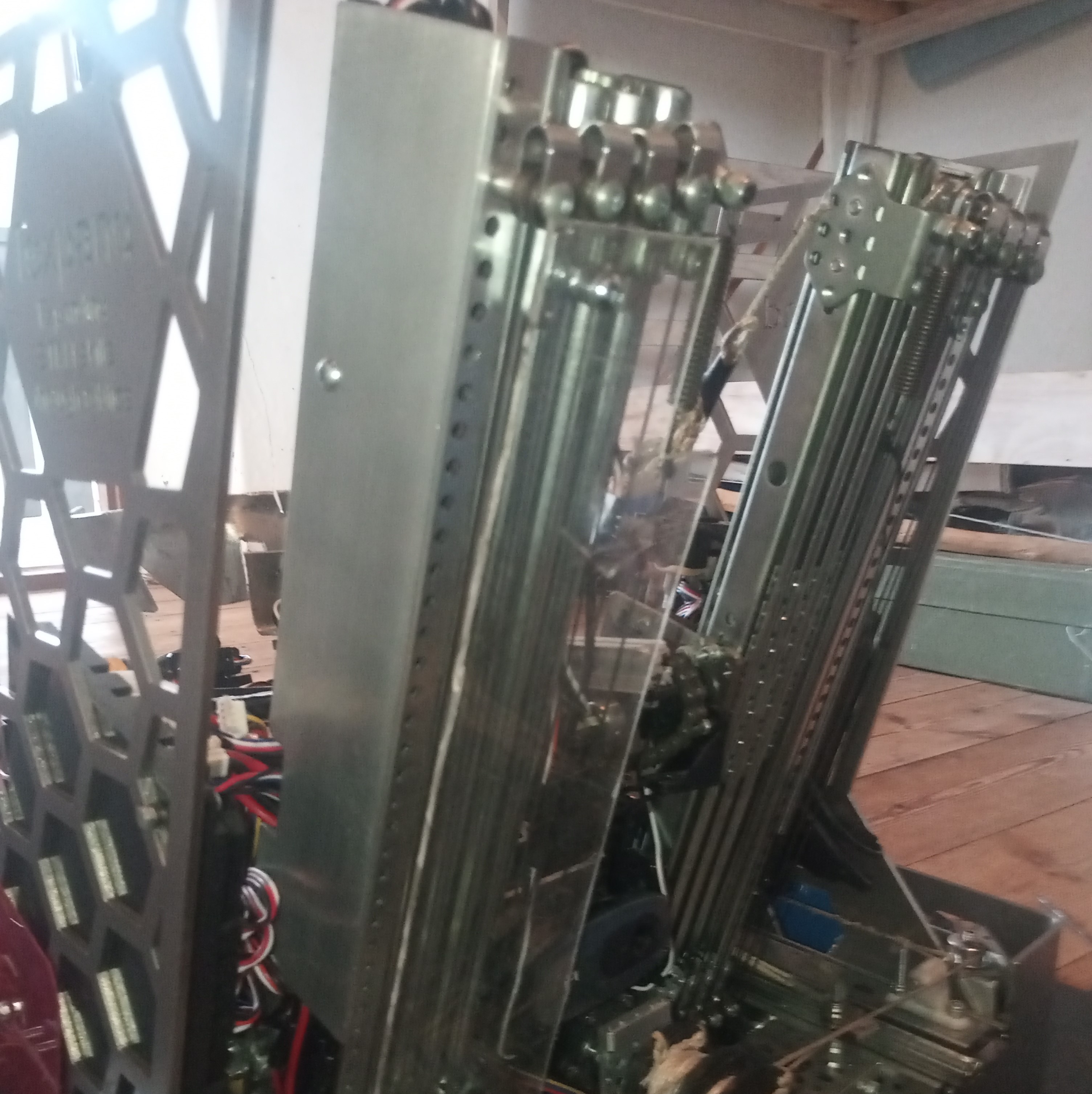
For our horizontal collection slides we have modified 50cm draw slides so that we got maximum extension while still fitting in the size constraints. The destacker and base gripper were mounted on top of these slides to extend with the slides to collect the cones.
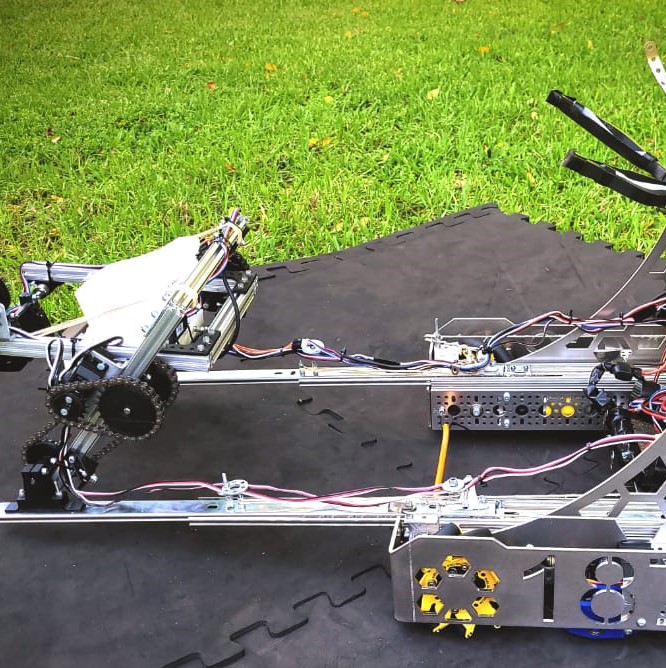
Our "Destacker" is a virtual four bar using custom 3D printed sprockets and brackets for attaching to the draw slides. This subsystem took the most time and iterations to get reliable and doing exactly what we needed it to do. Our "nest" for cone transfer is also mounted inside the destacker

We CAD designed some side panels for the robot to inprove Buff's "Swag" factor, HG molenaar kindly lazer cut them out of stainless steel for a very cool end product